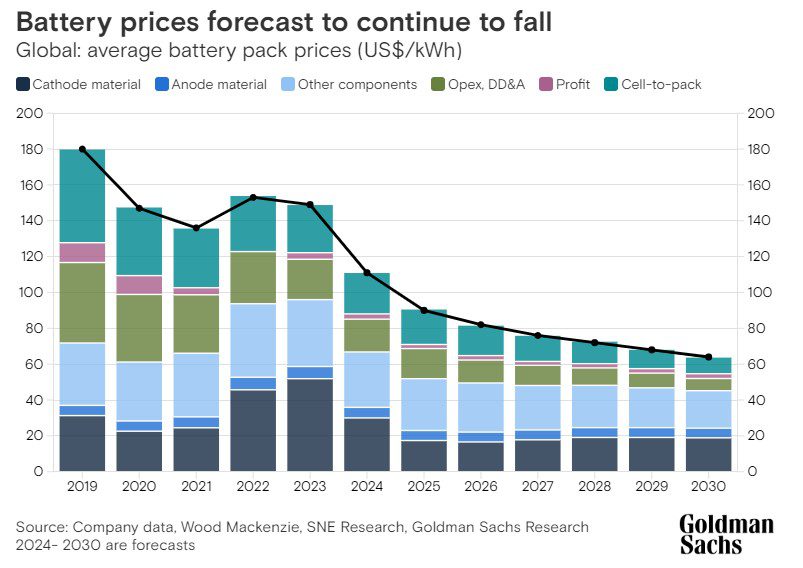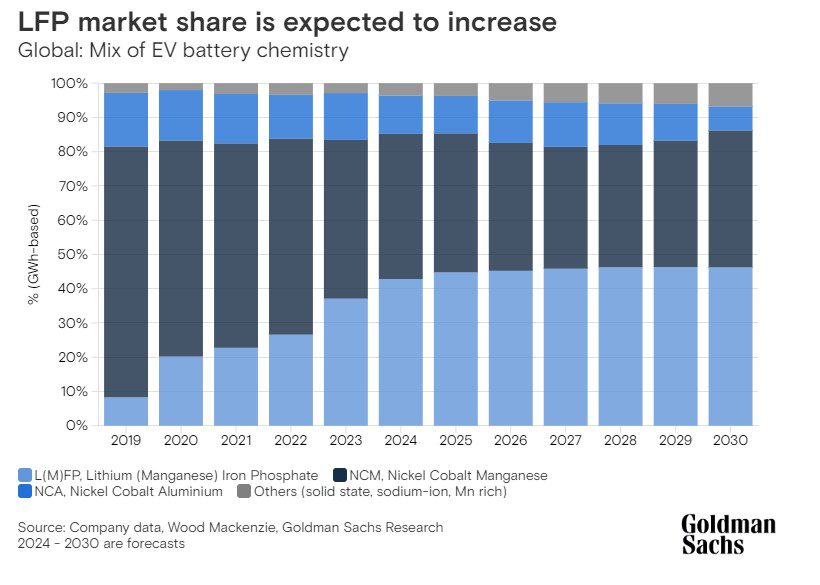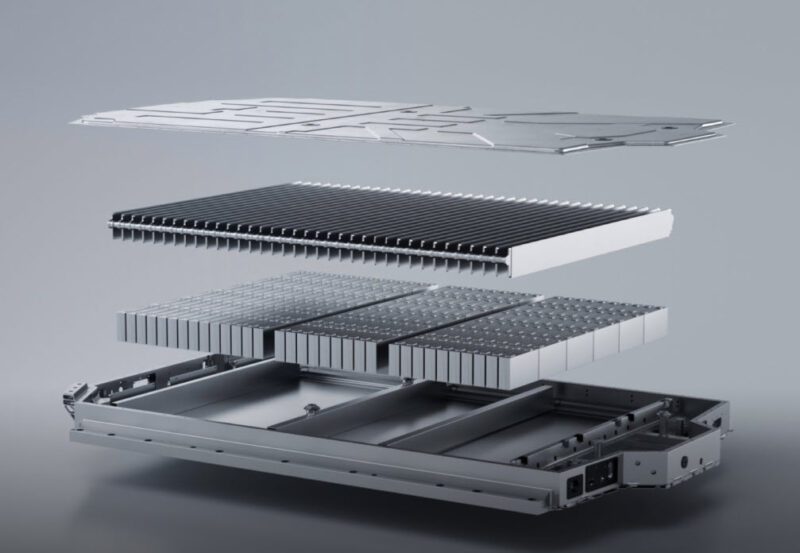Global electric vehicle (EV) battery prices could drop by almost another 50 per cent by 2026, according to Goldman Sachs Research, bringing with it the potential of price parity with internal combustion engine (ICE) cars.
Technological advances designed to increase battery energy density, combined with a drop in green metal prices, are expected to push battery prices lower than previously expected, according to a new briefing from Goldman Sachs Research.
It says global average battery prices declined from $153 (all prices in USD) per kilowatt-hour (kWh) in 2022 to $149/kWh in 2023 and are projected to fall to $111 by the end of 2024.
Goldman Sachs’ researchers further predict that average battery prices could fall as far as $80/kWh by 2026, which would equate to a drop of almost 50 per cent from 2023 levels.

It is at this point that the investment giant expects battery electric vehicles could potentially achieve cost parity with ICE vehicles in the United States on an unsubsidised basis.
To explain this expected fall in price, Nikhil Bhandari, co-head of Goldman Sachs Research’s Asia-Pacific natural resources and clean energy research, pointed to the introduction of new battery products that boast around 30 per cent higher energy density and lower cost.
“The innovation is related to the structure of the batteries,” said Bhandari. “The cells are getting bigger.
“You normally pack lots of cells into smaller modules, and then lots of modules into a big battery pack. Now they’re trying to eliminate modules and directly doing cell-to-pack. That helps you save a bit of space inside. So you’re cutting costs with more simplified structures and increasing the energy of the battery at the same time.”
Innovations such as increased energy density have come hand-in-hand with the continued downturn in battery metal prices, which – accounting for nearly 60 per cent of the total cost of batteries – will drive over 40 per cent of the decline in EV battery price declines throughout the remainder of the decade.
Further declines in price will rely heavily on new battery chemistries and formats, such as sodium ion and solid state batteries, respectively.
However, according to Bhandari, the development of solid state batteries has been slower than expected, and has now “been pushed out to the later part of this decade because of challenges in moving from lab scale to mass production.”
In the meantime, then, “lithium-based chemistries are going to get stronger and stronger”, led by the current dominant lithium-based battery chemistries, lithium NMC and LFP, which together account for the lion’s share of the market.

With the continued pressure driving EV battery prices down, Goldman Sachs asked Bhandari whether the trend would “rekindle EV demand”.
“When we looked at price parity with ICE (internal combustion engine) cars, we typically looked at the price premium a consumer will pay for an EV in terms of how long it will take to recover it through fuel cost savings,” said Bhandari.
“What we didn’t account for, historically, is another concern that the consumer has. Resale values of EVs are falling faster because consumers are thinking they can buy a cheaper EV maybe three years from now.
“We account for this in our recent enhanced total cost of ownership analysis. But given that we’re still expecting a rapid fall in battery prices, and assuming a still relatively elevated oil price environment, we believe that, in markets such as the US, the total cost of ownership parity will still arrive starting in 2026.
“Admittedly, that leaves near-term EV battery demand more dependent on regulations, especially next year. But we think we’re going to see a strong comeback in demand in 2026 purely from an economics perspective. We believe 2026 is when a consumer-led adoption phase will largely begin.”
Joshua S. Hill is a Melbourne-based journalist who has been writing about climate change, clean technology, and electric vehicles for over 15 years. He has been reporting on electric vehicles and clean technologies for Renew Economy and The Driven since 2012. His preferred mode of transport is his feet.

